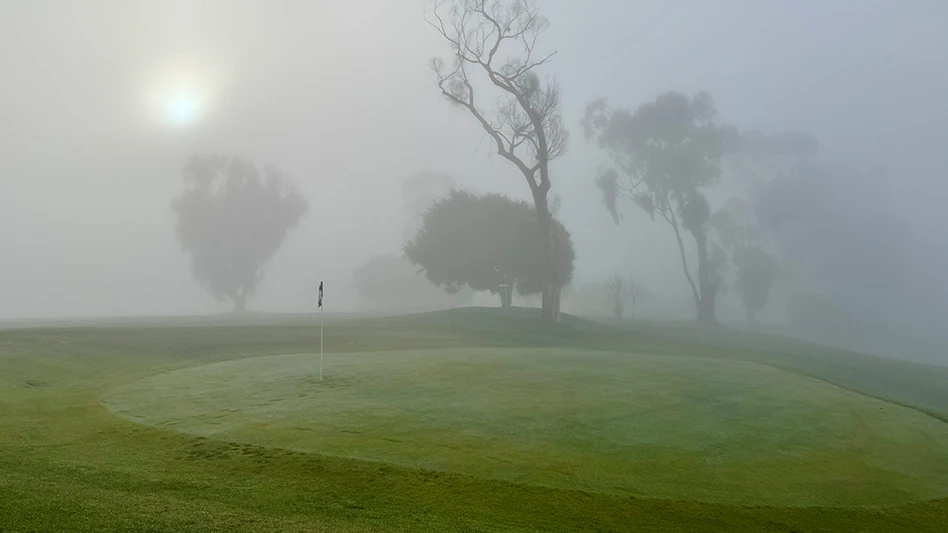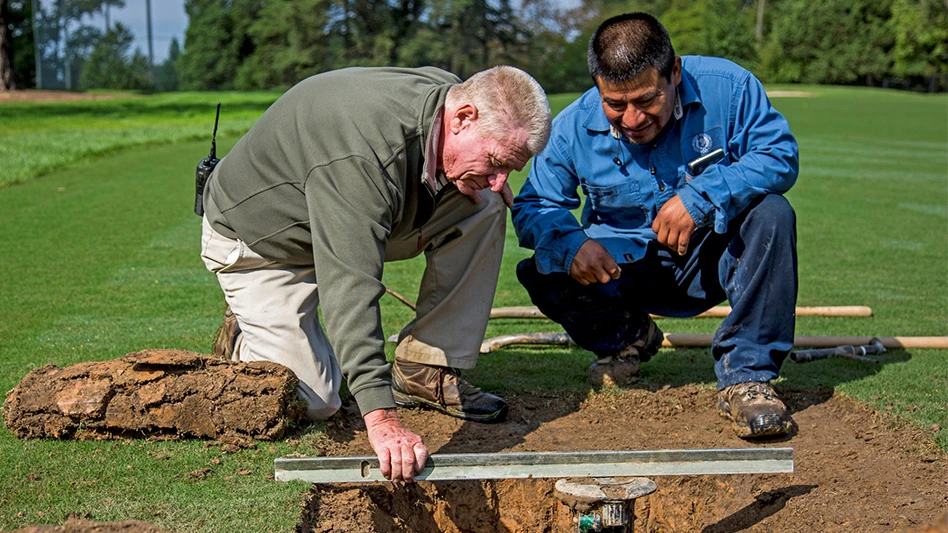As spring creeps closer to summer, superintendents in the Northeast are standing guard against a tiny killer that creeps onto their courses. If they’re not prepared, the annual bluegrass weevil can wreak havoc on tees, greens and fairways, leaving superintendents with brown spots that take much longer to heal than it did for the weevils to appear.
“If you’ve got Poa annua on your course in New Jersey, you’re spraying for annual bluegrass weevil,” says Cliff Moore, superintendent at Mountain Ridge Country Club in West Caldwell, N.J.
The pests overwinter in the roughs among leaves, brush and pine needles – wherever they can find shelter – before making their return each year to feast on the low-cut turfgrass. Moore expects this annual event to happen after forsythias have bloomed and green begins to take over on bushes. That’s his indication soil temperatures have reached the point in which the weevil thrives.
The adult weevils lay eggs in the crown of the plant, and it’s not long after that before they hatch. The larvae feed on crown of plant, get inside plant and feed from within. They chew on roots, killing the plant.
Damage takes the form of a spot in the turf that looks like it’s starting to dry out. Turf will turn yellowish and orange in areas that are lush and green otherwise. Moore knows to look on greens near wooded areas because that’s usually their first destination on his course.
“Peel it back, and you’ll see the larvae – they look like little rice pellets,” he says.
The past couple of seasons, it was getting more difficult for Moore to treat the insects.
“I was basically doing preventive measures every two to three weeks on the fairways just because there are so many generations,” he says. “I was starting to get damage because a resistance to pyrethroids developed. I went out at one time and sprayed at the normal rate and the next day at twice the rate, and they didn’t even react.”
Last year, Moore searched for a different tool to manage the infestation better. He was led to DuPont’s Provaunt, which is in a different class of chemistry than pyrethroids – the oxadiazines. The active ingredient in the water-dispersible granule is indoxacarb.
First, Moore lets the application sit on the grass so it can come in contact with the adults. Then he lets the irrigation system water it in at night so it gets down to where the larvae feed. The product is labeled for 24 ounces total application per year.
Moore appreciates the flexibility the insecticide provides. Even if he misses the timeframe to spray for the adult weevils, he can still use the insecticide to attack their larvae when they emerge. “It’s easier than Dylox or something like that,” he adds.
So far this year, Moore seems to be keeping the pests at bay. He spread a preventive application, but he remains on the lookout for the annual bluegrass weevil.
“It’s easier than it sounds, but at the same time, those suckers can get you,” he says.
Get curated news on YOUR industry.
Enter your email to receive our newsletters.Latest from Golf Course Industry
- Beyond the Page 65: New faces on the back page
- From the publisher’s pen: New? No way!
- Indiana course upgrades range with synthetic ‘bunkers’
- Monterey Peninsula CC Shore Course renovation almost finished
- KemperSports and Touchstone Golf announce partnership
- PBI-Gordon Company hires marketing manager Jared Hoyle
- Mountain Sky Guest Ranch announces bunker enhancement project
- GCSAA names Joshua Tapp director of environmental programs





